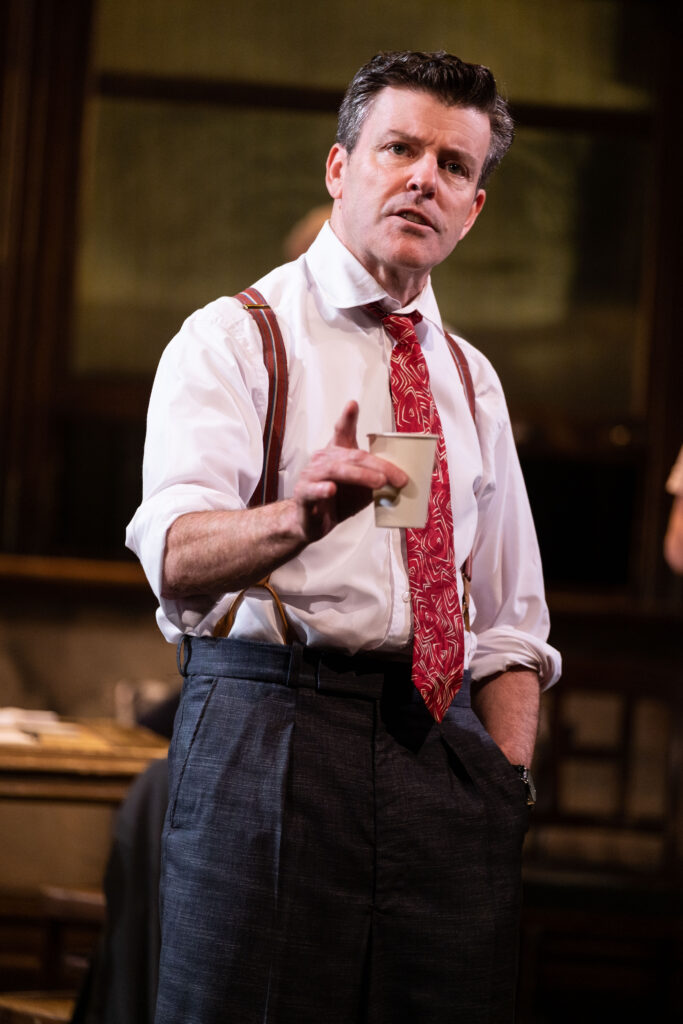Theatre Royal, Windsor- until 30th March 2024
Reviewed by Liberty Noke
5*****
12 Angry Men is a popular play and also movie first performed in 1954 audiences have been enjoying it for 60 years now and this performance made it clear why modern audiences still resonate with the messages of humanity within the play.
The play opens with the 12 men of the jury and a voiceover explains that it is their job to determine whether a man is guilty or not. It is explained that they must be certain he is guilty beyond reasonable doubt as if he is sentenced he will be put to death. The 12 jurors then walk to a room to discuss. The set is simple- a large table, 12 chairs, a watercooler. All very basic. The jurors are all dressed smartly in a muted colour palette but there are differences between their outfits showing that we have men here from all walks of life.
The foreman, played by Owen Oldroyd, conducts a vote and eleven men vote guilty but one votes not guilty. To the eleven it seems easy to vote guilty, they explain that the man stabbed his father to death, but Juror 8 (Jason Merrells) explains that sending someone to their death is an incredibly serious matter and that he thinks it should be discussed. The eleven then begin to lay out the evidence and the audience can start to decide for themselves if they think the accused is guilty or not. Some minds are changed as the play progresses but some of the men are stubborn Juror 3 (Tristan Gemmill) in particular seems certain of the accused’s guilt and seems to take every not guilty vote as a personal loss.
As the men discuss their verdict the table rotates very slowly on the stage. So slowly that you don’t notice at first this enables you to see different angles but I believe it draws a parallel in how your mind is being changed without you even realising it.
Watching this play in 2024 brings different context the accused man is said to be from the slums and it is heavily inferred that he is not white. Juror 5 (Samarge Hamilton) is the only member of the jury who also grew up in the slums. When other members of the jury mention that being from this background is a reason for committing violent crime, suggesting that ‘they’ are all the same Juror number 5 stands up for himself. The fight that ensues is a poignant moment in the play as Juror 5 leaves the room and stands in the corner of the stage simply looking down. Juror 11 (Kenneth Jay) follows him in a protective manner. It’s such a small part of the play but it really stayed with me. The audience is reminded that these generalisations and racism are still around today. It is also evident that in 1954 a jury of only men was not unusual, showing that times have changed.
Reginald Rose’s incredible writing makes this play wonderful. It is rare that a play set in one room featuring a only one long discussion on one topic can engross audiences but I found myself thoroughly invested in the drama. All of the actors gave incredible and believable performances. With themes like morality and humanity as well as the obvious question of “is he guilty?” this play makes for an interesting journey home discussing your thoughts and your own morality. I would recommend to everyone as it is gripping and thought-provoking with themes that resonate.

